NJEA President Marie Blistan concludes 12 years of transformative leadership
By Patrick Rumaker
To sit with Marie Blistan as she discusses her four years as president of NJEA, and her 12 years as a statewide officer, is to hear a recitation of names: names of her fellow officers, names of local, county, and state association leaders, NJEA staff, the leaders and members of partner organizations and public employee unions, and pro-public education elected leaders at all levels of government.
Blistan’s stories of her time as a statewide leader, and as a local and county leader prior to that time, are anchored in the relationships that helped move NJEA and public education forward. Relationships are the starting point for Blistan because she knows that leaders alone are not enough, especially as attacks on public education nationwide, often from both major political parties under the guise of education reform or pension and benefits reform, were gaining a foothold even in New Jersey.
From the time of her early leadership at the local level in the Somerdale Education Association and Washington Township Education Association, Blistan saw the value of relationships with, and activism directed at, school boards, town councils and mayors. When she became president of the Gloucester County Education Association in 2005, the need for her to become more involved in a statewide strategy became more apparent to her.
“I realized how vulnerable we were, and I realized that the voices of officers alone were no longer going to work,” Blistan said. “I was committed to raising the voices of rank-and-file members across the state, not only to protect what we had but to gain some ground.”
Blistan said it was this drive to raise the voices of members that initially motivated her to run for NJEA secretary-treasurer in 2009.
A challenging time
Blistan became NJEA’s secretary-treasurer at a particularly challenging time. Gov. Jon Corzine had lost his bid for reelection to Chris Christie, a governor who would make his mark not only by attacking public education and vilifying union leadership, but by taking pride in publicly attacking individual teachers and educational support professionals (ESPs), as he sought to pit educators against other residents of the state.
Rather than bring all New Jersey residents together in the midst of an international financial crisis, Christie sought to shift the blame for the Great Recession from the risky practices of Wall Street to the salaries, pensions and benefits of New Jersey’s educators and other public employees.
“Our world turned upside down, and we were knocked down, but we got up, and they weren’t counting on that,” Blistan recalled. “And I knew one thing—when we were knocked down, I was getting up, and I was getting up stronger.”
But conflict at the Statehouse was not the only challenge.
Superstorm Sandy and Sandy Ground
On Oct. 29, 2012, Superstorm Sandy struck the New Jersey coast, wreaking havoc across the state destroying some schools and closing others for extended periods. The 2012 NJEA Convention was cancelled. Thousands of New Jersey residents were left homeless, including NJEA members and their families.
Blistan noted that this was when NJEA’s Disaster Relief Fund was created. While NJEA had previously offered financial assistance to local associations and to members, the relief fund was the first time an assistance program was permanently put into place. That fund served as the template for the Pandemic Relief Fund that was created in response to member crises caused by the statewide shutdown in the wake of COVID-19.
“It was a different way of viewing our union,” Blistan said. “For both relief funds, we’ve hand-delivered the checks and said, ‘This is on behalf of 200,000 members. We’re here with you.”
Blistan noted that member-to-member support went beyond financial assistance. Mechanisms were put into place to enable local associations and county associations less affected by Superstorm Sandy to be paired with local associations that were hit particularly hard. Local and county associations worked together with NJEA support to replace needed school supplies for classrooms and buildings that were damaged or destroyed.
In December of 2012, another tragedy bearing the name “Sandy” struck when a lone gunman murdered 20 children, two classroom teachers, a paraprofessional, a school psychologist and the principal at Sandy Hook Elementary School in Newtown, Connecticut. Because of its proximity to the New York metropolitan area, New Jersey educators and residents had many connections to the victims at Sandy Hook.
In response, the New Jersey Firefighters Mutual Benevolent Association (NJFMBA) asked NJEA and other partners to join a project called Sandy Ground: Where Angels Play. The idea was to build new playgrounds in communities in New Jersey, New York and Connecticut that were devastated by Superstorm Sandy. Each playground was a memorial to a victim of the Sandy Hook massacre.
In her role as secretary-treasurer, Blistan took the lead for NJEA, but she did more than sign checks and get funding approvals. She took a personal interest in the project. More than a dozen playgrounds were built in New Jersey. Each groundbreaking ceremony for each new playground was a community event, often including family members from Sandy Hook. Blistan attended every ceremony.
“We connected the communities that needed rebuilding because of the superstorm to each other and to the community at Sandy Hook,” Blistan said. “What we were really doing was bringing all of those communities together as one.”
Teacher Leader Academy
Blistan recalled that her original reason for getting involved with her local association as a first-year teacher was to help the students in her class. Federal funding for special education that was supposed to filter down to her classroom did not show up in her classroom budget. Representing herself before her superintendent as a classroom teacher did not move her superintendent to take a second look at her budget. But when she returned to his office as a newly minted building rep with the power of her local association behind her, he found the funding.
“Working through my union was an avenue for me to get things done, but I wanted to have a much broader outreach,” Blistan said. “I found that the only way that was going to happen was if I went into administration—but I didn’t want to leave my classroom.”
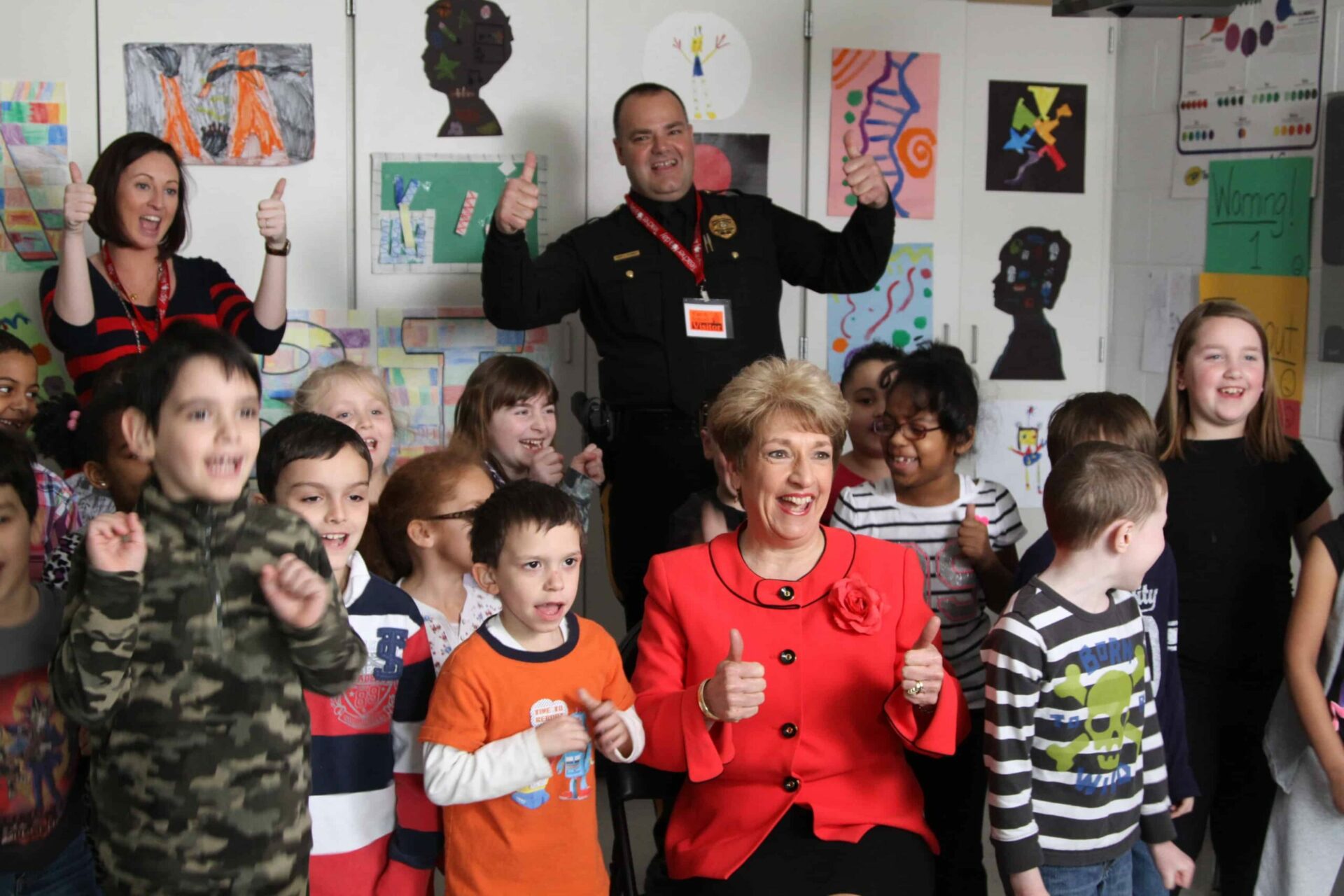
Getting legislation passed and signed to create the teacher leader endorsement was itself a multiyear process. It took several additional years for the regulatory process in the New Jersey Department of Education to create the endorsement.
Concurrent with the creation of regulations, NJEA set about creating the NJEA Teacher Leader Academy so that the association would be poised to run its own program leading to the endorsement. From the inception of the idea for a teacher leader endorsement to the first meeting of the first cohort of NJEA Teacher Leader Academy spanned Blistan’s 12 years in statewide office.
This year, the candidates from the first class of the NJEA Teacher Leader Academy have earned the endorsement.
Healthy Schools Now
When Gov. Christie stopped funding capital projects in the poorest school districts in the state, the New Jersey Work Environment Council approached NJEA for help.
“The Schools Development Authority (SDA) was using its money for God only knows what, but it certainly wasn’t for our schools,” Blistan recalled.
With staff, Blistan developed a list of local presidents from the affected districts and potential partner organizations to join a campaign to restore funding for repair and rebuilding projects in the former Abbott districts. It amounted to more than 20 groups and individuals.
The stories of local presidents and photography played a pivotal role in changing the dynamic.
Trenton Central High School, once a shining example of public investment in public education when it opened in 1932, was in a deplorable condition from a crumbling exterior to a leaky, cracked and collapsing interior. But in 2011 there was little appetite in the Christie administration for the public investment required to repair or replace a building once hailed as “an ornament to the city” of Trenton.
“We were going into the SDA every month and telling them about these problems,” Blistan said. “We asked them to come take a look at the schools and they wouldn’t! And Trenton was sitting right there! They wouldn’t go four blocks!”
So NJEA and the Trenton Education Association brought Trenton Central High School to the SDA. With poster-sized photographs held by TEA members showing the deteriorating conditions at the high school, they staged demonstrations and press conferences as one part of a long-term strategy to get funding for SDA projects restored and expanded. Ultimately, through the work of many individuals, community groups and organizations, a newly constructed Trenton Central High School opened its doors in September 2019 and funding was restored for other capital projects around the state.
Photography and local leadership played a role in Orange as well, where the disparity between urban and suburban public schools was illustrated through “A Tale of Two Schools,” a project that followed Blistan’s visit to the city’s schools.
As she toured the conditions at a resource-starved school, Blistan recalled saying, “You know what really disgusts me is that you would never see this in a suburban school.” When an NJEA staff member, one of the dozens named by Blistan over the course of an interview, replied, “You’re right! I went to school in South Orange in a school the same age as this one and it looks nothing like this.”
Out of that conversation, “A Tale of Two Schools” was born. The booklet contained photos of the crumbling conditions at one school in Orange placed side-by-side with photos of a school about the same age, but in much better condition, about one mile away in West Orange.
“That was a classic example of institutional racism, which I didn’t fully recognize at the time, but I do now,” Blistan said.”
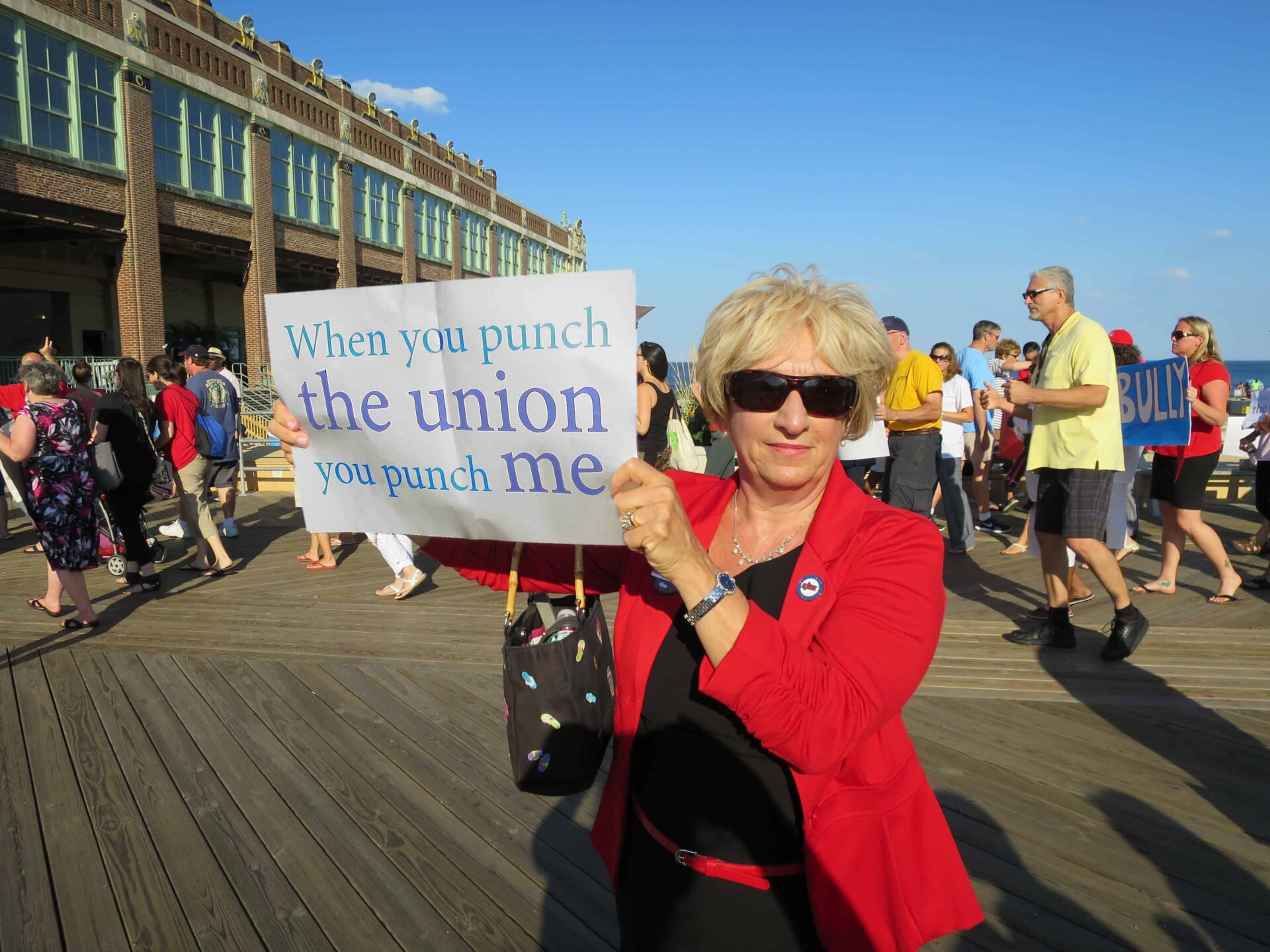
Special Education Task Force
A special education teacher herself, Blistan took notice when, early in 2013 the New Jersey Department of Education sought regulatory changes that would enable special education teachers and school counselors to serve as case managers, essentially eliminating child study teams.
Working with the Statewide Parent Advocacy Network and Disability Rights New Jersey, Blistan formed the Special Education Stakeholders Coalition to oppose the elimination of child study teams and other harmful changes in the proposed regulations. With the coalition, NJEA held its first-ever statewide teleconference on April 22, 2013. Nearly 1,000 parents and teachers participated in the call, which also promoted an action plan to halt the proposals.
“Many people thought the changes couldn’t be stopped,” Blistan recalled. “I remember thinking, ‘I don’t know if we’re going to meet with success, but I know what I have right now. I know what we’ll have if we don’t try, so let’s try. And we were able to stop them.”
Electing a new governor
As eight years under Chris Christie were finally coming to an end, Blistan knew that in order to have a more effective voice in the next administration, NJEA had to get involved early. The NJEA PAC Operating Committee typically met in April in advance of New Jersey’s June primary elections, and in August in advance of the November general election.
In mid-2016, with three Democratic candidates already declaring their intention to run in the June 2017 primary, NJEA’s officers, in consultation with the PAC Operating Committee, decided to screen the candidates six months earlier than usual.
“We got involved early on, and once we announced that we were getting involved in the primary, other unions and organizations started do the same thing,” Blistan recalled.
In October 2016, NJEA announced that then-Ambassador Phil Murphy was its choice as Democratic candidate for governor.
NJEA PAC ran a screening process for the endorsement of a Republican primary candidate, but the only candidate to stand for screening was Lieutenant Gov. Kim Guadagno from the Christie administration.
“We came in early and we made a difference,” Blistan said.
NJEA played a major role in the gubernatorial and legislative races in 2016, running campaigns that caught national attention. NJEA members throughout the state campaigned door-to-door on behalf of NJEA PAC-endorsed candidates that year with several high-profile races that would strain relationships between NJEA and the Legislature and between the governor’s office and the Legislature.
“We stood up for ourselves and it made a difference,” Blistan said. “And now that I was president, I stuck to my number one goal: to elevate the voices of members, to advocate for our profession, and to move public education forward. We were in some dire straits, but I was adamant that I wasn’t getting knocked down. We were not going to be knocked down. We’re going to hold our heads high. The election was over; now we start over.”
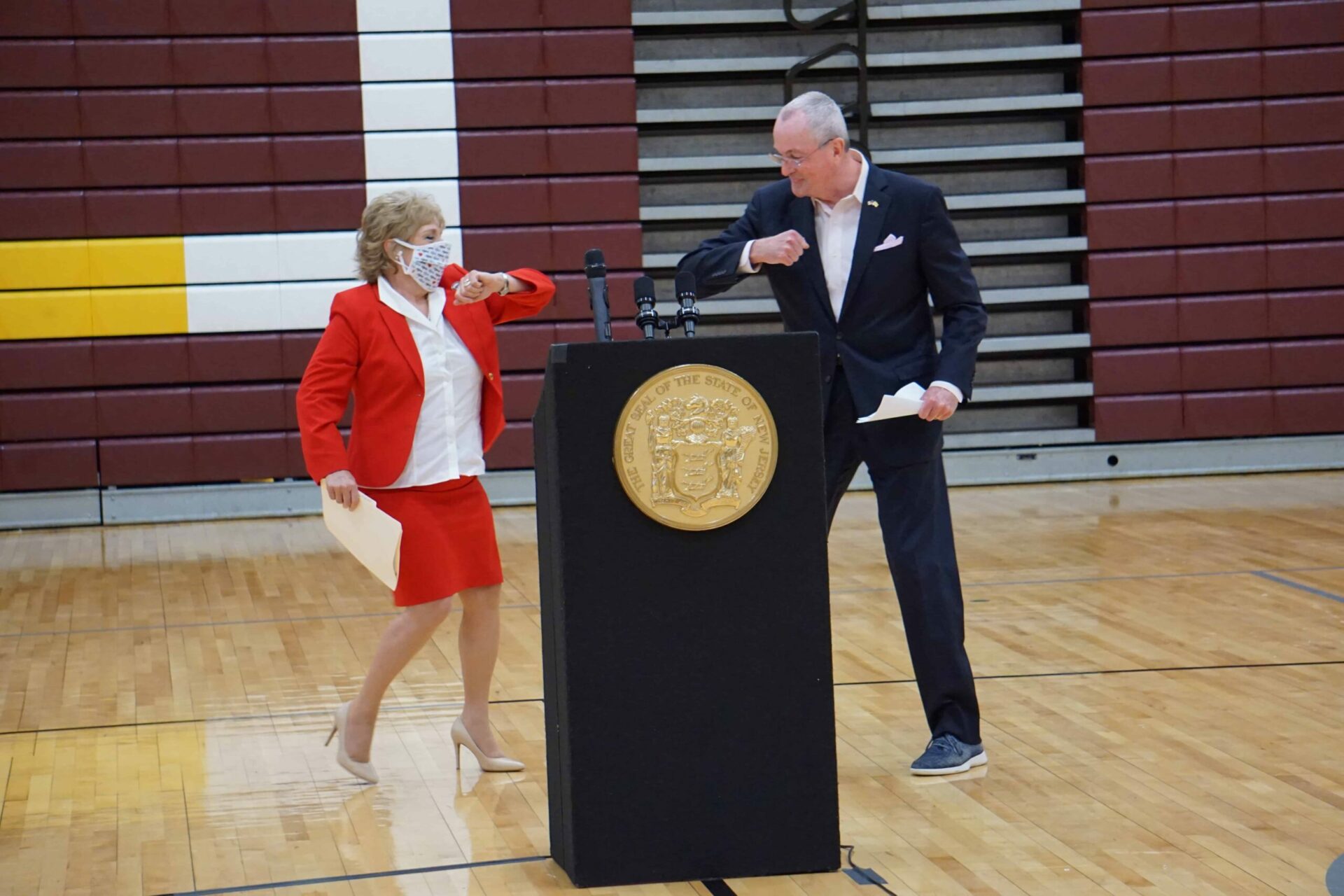
Ch. 78 relief and Job Justice for educational support professionals
As the new NJEA president, Blistan met with her new leadership team to establish their goals.
“We needed to go after our members top concern, and it was Chapter 78—there was no question,” Blistan said. “And we had to make sure the state paid its contribution to the pension system.”
Blistan knew that school funding also had to be addressed.
“We were out $9 billion over those last eight years, and we knew the impact of that,” Blistan said.
Blistan recalled that when she first began teaching she was appalled to learn that ESPs did not have the same job protections that teachers had.
“There has to be respect for our ESPs, and we have to recognize them as true partners in our work,” Blistan said. “There are not extra—they are essential, which is why I so often say essential school professionals.”
In what turned out to be a three-year undertaking, NJEA launched an ambitious campaign to secure relief from the crippling payroll deductions caused by Ch. 78 and to demand job justice for ESP.
Ch. 78 was a law passed in 2011 that, among many odious provisions, sharply increased health benefits payroll deductions. The deduction was calculated based on a percentage of the health insurance premium. As a school employee’s salary increased, the contribution percentage increased. This was compounded by the ever-increasing cost of the health insurance premium. Members learned the term “negative net”: every year their take-home pay decreased even if their base salary had increased.
Job Justice for ESPs meant seeking legislation that would secure due-process rights for ESPs. It would protect ESPs from being dismissed from employment without just cause. It also meant protecting their work from being easily privatized. NJEA sought legislation that would prohibit a school board from subcontracting ESP work during the term of an unexpired collective bargaining agreement and would place conditions around a board’s ability to attempt to subcontract ESP work after a contract had expired.
Similar bills to secure these protections for ESP had been passed by overwhelming margins in previous years, only to be vetoed by Gov. Christie. As one of his campaign promises, Murphy told NJEA members that he would sign these Job Justice bills when they reached his desk.
Recalling her initial reasons for running for statewide association office—and knowing that Ch. 78 relief and Job Justice for ESPs would require a massive campaign—Blistan wanted a plan that included members from the start.
“This was the first time that members had been brought in on the actual campaign planning team with staff,” Blistan said. “We knew that the normal way of going about it wasn’t going to work. We needed both the expertise of the best state association staff in the nation and the power of the most engaged association members in the nation.”
The campaign also included New Jersey Retirees’ Education Association (NJREA) leaders and NJREA members who were not directly affected by the ESP legislation. With much lobbying taking place during the workday, it was NJREA members who filled the halls of the Statehouse talking with legislators about bills that more directly affected nonretired NJEA members.
“NJREA leadership has been phenomenal,” Blistan said. “We wouldn’t have gotten anywhere in the last 12 years without those retirees.”
After a sustained three-year campaign, and nine years after Ch. 78 had become law, victory was achieved when on July 1, 2020, Gov. Murphy signed Ch. 78 relief. The new law created a comprehensive equivalent health care plan that saved NJEA members thousands of dollars every year by tying health care contributions to a percentage of salary rather than a percentage of the premium—a combined $403 million savings overall. The plan also saved New Jersey taxpayers $670 million a year.
Then, on Aug. 13 Murphy signed the first of the two job justice bills, enacting long-awaited job due-process protections for ESPs. On Sept. 12, Murphy signed the anti-privatization bill.
All three pieces of legislation came about because NJEA members never relented in the organizing and advocacy efforts from the start of the member-led campaign. It also was a signal that NJEA’s collective power makes a difference. Political forces that only three years prior appeared to have irreconcilable differences worked together for the benefit of NJEA members, students, and the general public.
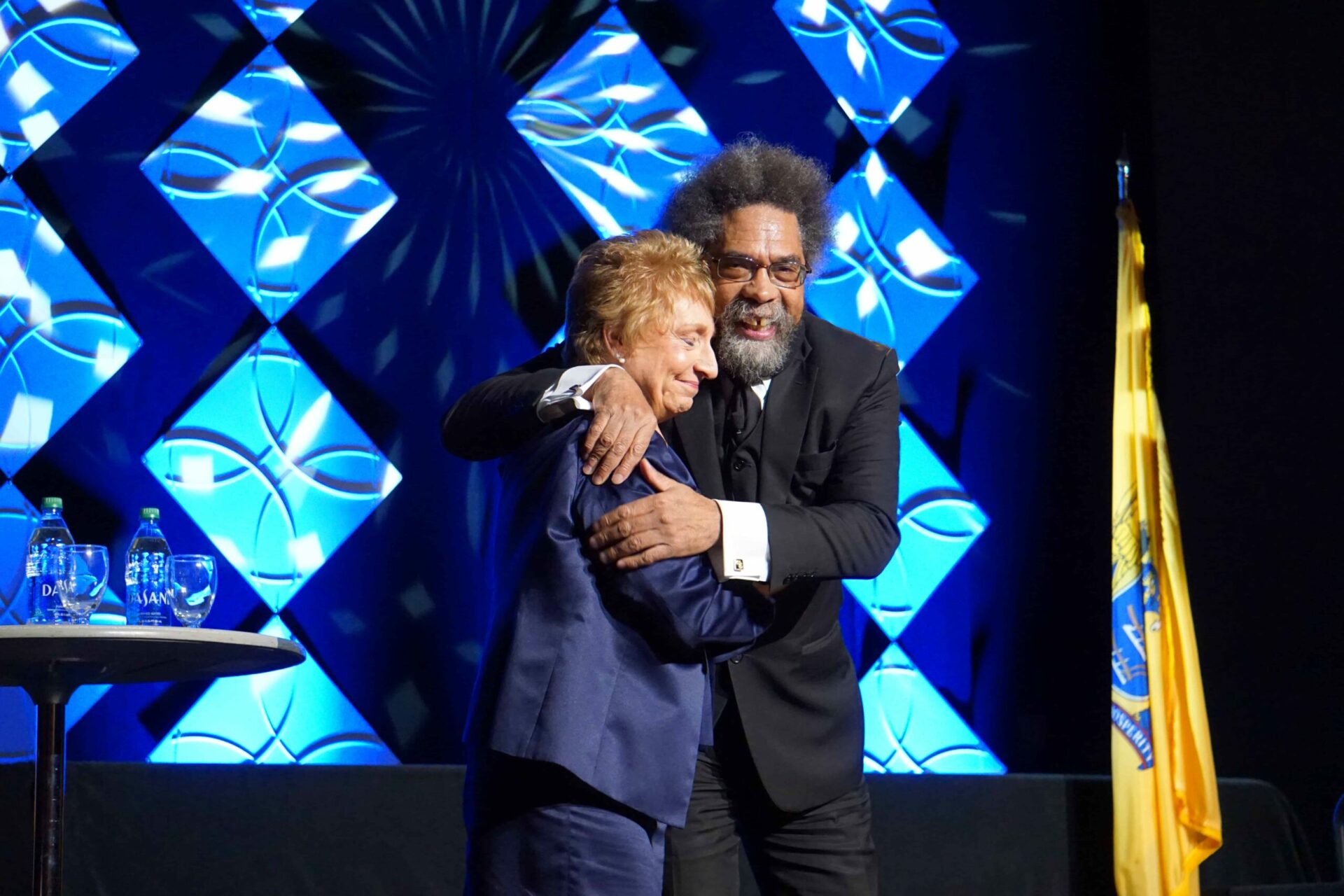
Pension payments and school funding
For the first time since 1996, New Jersey is poised to make its full actuarily determined state contribution into the pension system in Fiscal Year 2022. The proposed payment came as a welcome surprise. Fiscal Year (FY) 2022, which begins this July, is the ninth year of what had become a ten-year ramp up to full pension funding. The first full payment wasn’t expected until FY 2023.
“When we talk about empowering members, when we talk about having respect for the profession, when we talk about recognizing what it is our members do every single day, when we talk about holding our elected officials accountable for their promises, that pension payment covers all the bases!” Blistan said.
Blistan said that the fight for pension funding shows the value of membership.
“When we were talking to our members by going door-to-door in neighborhoods and door-to-door in our school buildings, we were demonstrating the value of this union,” Blistan said. “It was this union that did this work politically, that did this work communally, that did this work at the local, county, state and national levels to get the right people elected and to get their attention about the power that we have, and also about the valuable impact that we have on their children, on our children, and with society, and connecting that all together.”
Blistan connected the ultimate result of that union advocacy to New Jersey’s high-performing schools.
“I’m very proud of the fact that we have the best ranked schools in the United States two years in a row, but that’s not me; that’s our members,” Blistan said. “But we couldn’t do it without the parents, mayors, town councils, legislators, and governors.”
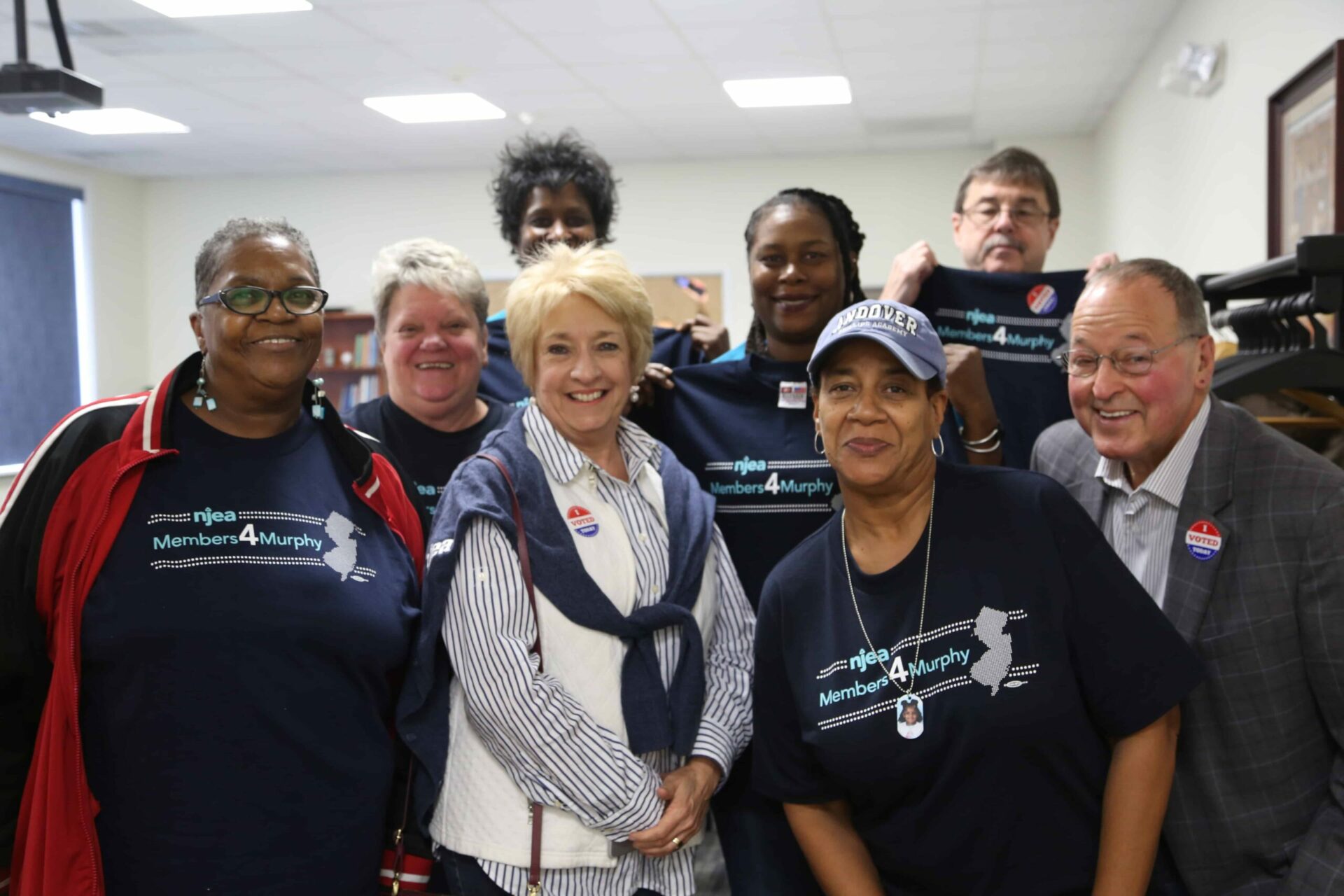
Racial, social and economic justice
The pivotal role that NJEA can play in the struggle for racial, social, economic and education justice is not a new concept to Blistan.
In 2017, as Blistan became president of NJEA she was interviewed for the NJEA Review. During that interview she reflected on the so-called Unite the Right rally in Charlottesville, Virginia that was occurring at the time. Growing up during the era of Dr. Martin Luther King Jr., John F. Kennedy, Robert Kennedy, and Malcolm X, Marie saw parallels to today’s struggles.
“I saw their passion for civil and human rights and the acts of violence that tried stop the progress of those embroiled in the struggle,” Marie said in 2017. “Given what is happening in Charlottesville and elsewhere, it is our mission is to educate our children and pursue racial, social and economic justice to counter the forces of evil in our midst. We must engage and empower members like never before. We must make sure that their voice is the voice of this union.”
Over the course of the last four years, NJEA has embarked on a series of initiatives to help build a more racially just society, such as the Undoing Racism program, and staff and member-led programs such as the NJEA Members of Color Network and NJEA REAL, a movement for racial equity, affirmation, and literacy.
Association staff and members have also considered the ways in which the association itself has through its own history contributed to systemic racism and the work that it needs to do to dismantle it. Blistan noted that the long-standing NJEA Bolivar L. Graham Practicing Apprentices Program has been revamped and expanded into a two-year program. The apprentice program which is aimed at removing barriers to the equitable participation of women and members of color in association leadership and staff employment, provides training and professional opportunities and experiences.
NJEA has also taken a lead role in strengthening the Amistad mandate, which became law in 2002, establishing the Amistad Commission and requiring public schools to teach about the African slave trade, slavery, and the vestiges of slavery, and the contributions of African Americans to the nation.
In September of 2018, NJEA President Marie Blistan met with representatives from each of the statewide education advocacy organizations and the New Jersey Department of Education to discuss wider and more substantial implementation of the Amistad law. The result was the NJEA Amistad Stakeholder Group, which includes representatives from the groups at that initial meeting and representatives of Amistad Commission. It is working to more fully implement the Amistad law, laying out measurable recommendations to hold itself accountable for the results.
Labor-management collaboration
Blistan recalled from her days as a local leader the importance of developing productive relationships with administrators, particularly in areas where the association and the administration could find common ground.
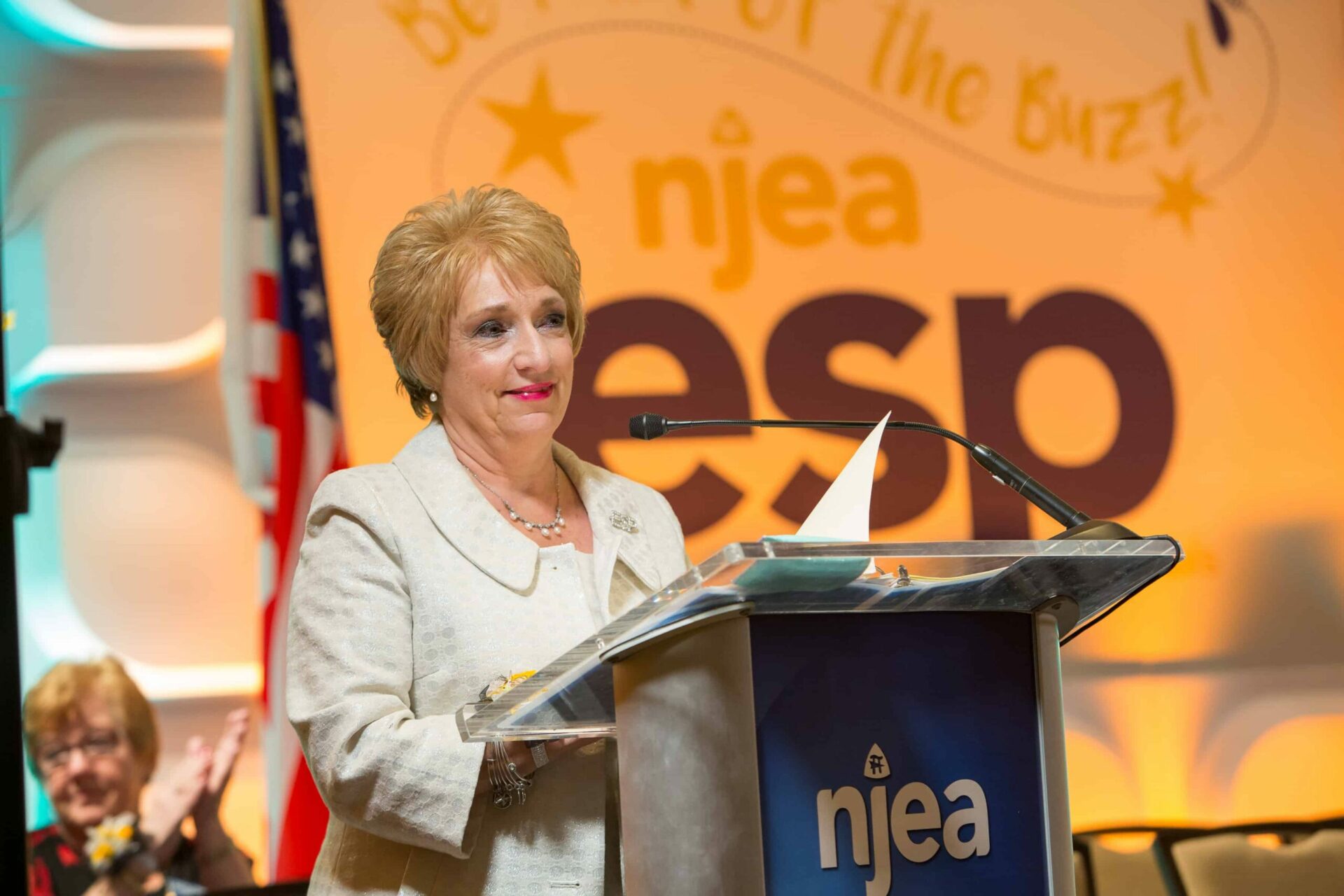
She noted that such collaboration, while productive, was rarely systematic. When individual association leaders or administrators moved on, any new collaborative efforts would have to start from scratch.
Research conducted by Professor Saul Rubinstein, a professor in the Rutgers School of Management and Labor Relations, revealed that collaboration among labor and management in a school district correlated with student learning. A chance meeting with Rubinstein at a New Jersey School Boards Association task force meeting led to Blistan bringing the concept back to NJEA.
“I understood the value of labor-management collaboration, but before meeting Saul I never connected it to student achievement,” Blistan said.
Blistan, who was vice president of NJEA at the time, proposed that the association work with Rutgers to bring the concept to local associations and their school districts. There are now numerous labor-management collaboratives throughout the state. The program is so successful that the National Education Association has granted NJEA $500,000 to expand the New Jersey Public School Labor-Management Collaborative and is investing $3 million over the next three years to expand the program nationwide.
NJEA committees and member voices
As NJEA prepared for what was expected to be an adverse decision from the U.S. Supreme Court in Janus v. AFSCME in 2018, the association continued working to ensure that educators understood the value of union membership and the power of active participation in the union.
“I knew the power of NJEA committees, but I also knew that most members didn’t even know they existed,” Blistan said. “The committee structure had served us well and was intended to bring member voices in, but I felt that we were going to have to reconnect with members who didn’t know that history, so that they would see the committees as an avenue to be seen and heard.”
The NJEA president, in consultation with the NJEA Executive Committee, appoints committee members and committee chairs. Blistan put practices in place to ensure that she was intentional in her committee appointments to increase the number of members serving on association committees and to ensure that they represented the diversity of NJEA members.
Blistan also charged committee members with the task of strengthening their outreach to the members they represented and tracked the progress committees made to reaching annual goals that reflected that outreach. Committees are currently engaged in a process to revise their charges through the lenses of organizing, diversity, inclusion and equity.
Leadership in a pandemic
When the COVID-19 pandemic closed school buildings and moved instruction into a remote, and later a hybrid, environment, public education was second only to public health among the concerns of New Jersey residents. Teachers and ESPs were regarded by the public as heroes during the pandemic, and as parents and educators weighed the risks of when and how to reopen school buildings, NJEA insisted that the health and safety of students and staff be the first consideration.
With schools at the heart of nationwide and statewide discussions about COVID-19, it was not uncommon to see Blistan and her fellow officers interviewed for news programs or participating in panel discussions about the impact of COVID-19 on members, students and families.
NJEA’s response to the pandemic yields again from Blistan a long recitation of the names of individuals, organizations and elected officials with which the association has forged powerful relationships. The names of local and county association leaders and rank-and-file members and NJEA staff are at the top of Blistan’s stories about educators’ and NJEA’s response to the pandemic.
“I’m extremely proud of our response—and especially of our members’ response—over this tremendously difficult year,” Blistan said.

What’s next for Blistan?
With her retirement on the horizon, Blistan is looking forward to seeing her family more often.
“I’m especially looking forward to seeing my grandchildren more often,” Blistan said. “All six of my grandchildren have been born during these last 12 years, and there’s been a lot that I’ve missed.”
Blistan’s husband, Bob, himself a retired educator is likely looking forward to Marie’s retirement as well. It was a rare occasion when Bob Blistan was not by Marie’s side at an NJEA event. That he did most of the driving enabled Blistan to conduct association business from the passenger seat as they put tens of thousands of miles on their car annually to meet with members, attend association events, and foster those relationships so central to Blistan’s vision of leadership.
“I couldn’t have done any of this without him,” Blistan said. “He’s been solid, and he has always been my cheerleader.”
As her 12 years in statewide office come to a close, Blistan feels she is leaving the association in good hands.
“I feel like we, collectively, have moved the association and public education to a better place,” Blistan said. “Just as I stand on the shoulders of those who came before me, I am confident that Sean, Steve and Petal are going to continue to move NJEA and public education to another level. I’m going to be proud of the work that they’re going to do, and of what they, and others who come after them, will accomplish.”
Patrick Rumaker is the editor of the NJEA Review. He can be reached at prumaker@njea.org.
